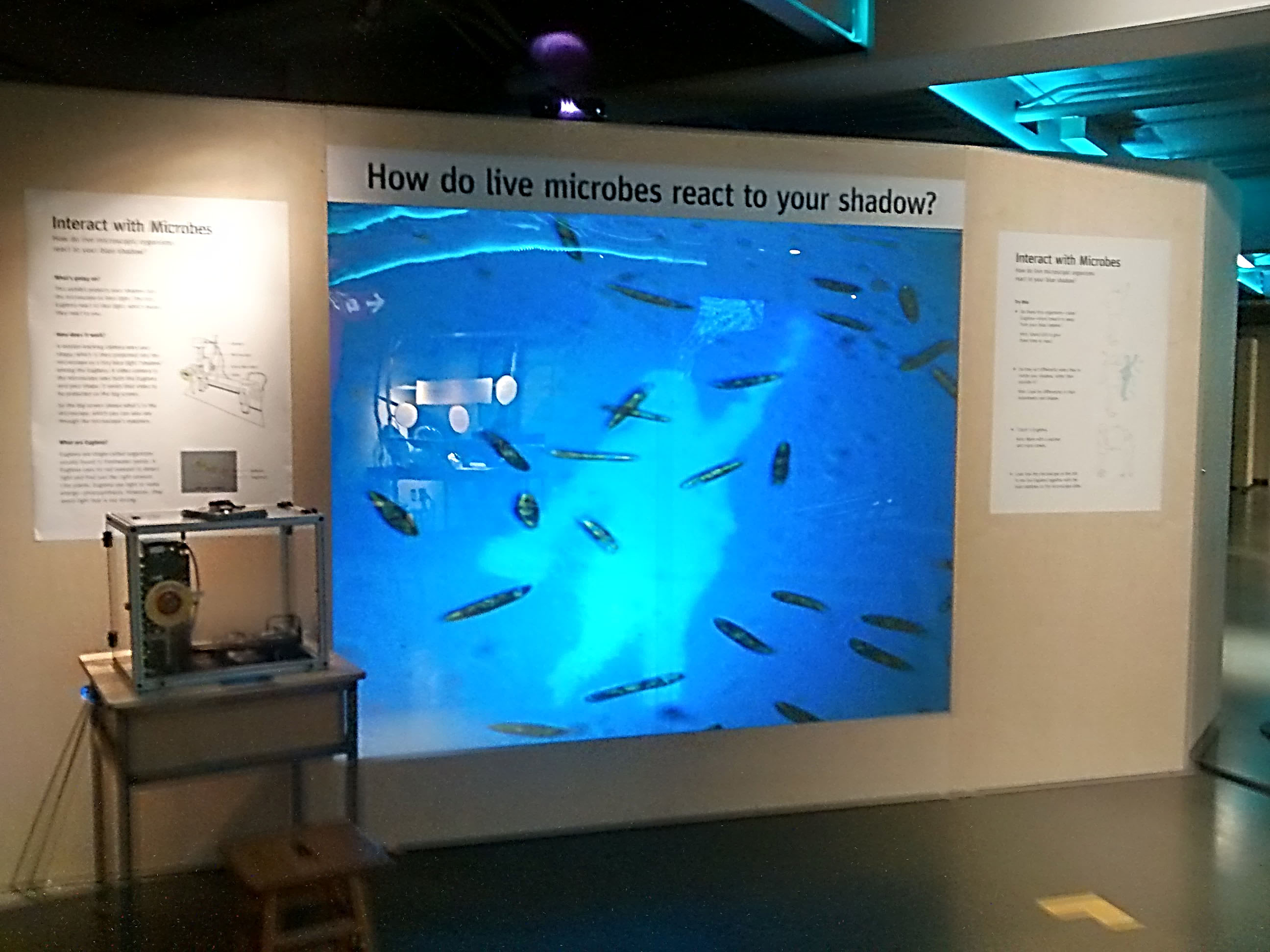An interactive microbiology exhibit for the Exploratorium

A prototype Exploratorium exhibit where visitor avatars are projected into the microbial world and can interact with the microbes.
Microbiology exhibits in museums are frequently strictly observational, i.e., visitors are unable to interact with the biological sample. However, using the unicellular phototactic algae, Euglena gracilis, it is possible to affect the motion of the cell (i.e. steer) in real-time using light stimuli, enabling user-cell interaction.
In this project, I partnered up with the San Francisco Exploratorium, an interactive museum of science, art, and human perception, to develop prototype exhibits capitalizing on the phototactic nature of Euglena cells. In one prototype, we investigate touchscreen based interactions, where visitors are able to draw light stimuli which are projected onto the cells in real-time as the drawing occurs. In the second prototype, we investigate full body interactions, where we use an Xbox Kinect sensor to detect human silhouettes, and project the silhouettes onto the cells. In the third prototype, we combine the touchscreen and full body interactions by allowing users to draw on a large wall.
While building these prototypes, I needed to design for robustness and reliability since the museum sees thousands of visitors daily. Furthermore, many of these visitors are children or people with little to no experience with microbiology or optics. Thus the user interface was kept relatively simple. We hope that these first-of-its-kind prototypes will lead to a rewarding and fun experience for all visitors to enjoy for many years to come.
For further reading, see A. T. Lam, et al., Nature Biotechnology (2019). See also the Stanford press release.